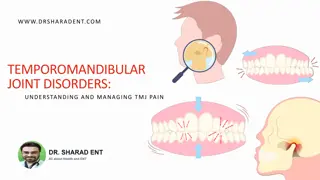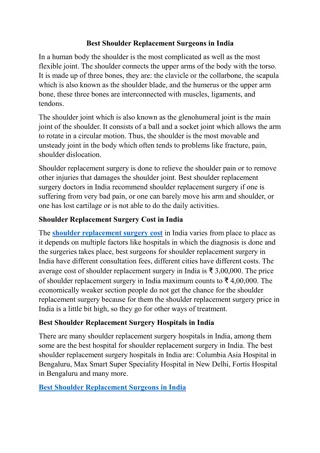Understanding Flexibility and Joint Health
Flexibility is essential for optimal joint health, allowing for smooth movement and reducing the risk of injuries. Joints, ligaments, muscles, and tendons play crucial roles in supporting flexibility and mobility. Maintaining flexibility through activities like static stretching can promote overall well-being by preventing pain, enhancing stability, and relieving tension.
Download Presentation

Please find below an Image/Link to download the presentation.
The content on the website is provided AS IS for your information and personal use only. It may not be sold, licensed, or shared on other websites without obtaining consent from the author. Download presentation by click this link. If you encounter any issues during the download, it is possible that the publisher has removed the file from their server.
E N D
Presentation Transcript
The ability to move a joint through it s full range of motion.
Joint A joint is the point at which 2 bones come together.
Types and Examples of Joints Types of Joints Pivot Gliding Hinge Ball and Socket Examples Neck Wrist and Ankle Knee and Elbow Hip and Shoulder https://www.youtube. com/watch?v=Z5QUX NBakvM
Ligament A ligament is a strong, fibrous tissue that attaches one bone to another. Bone to bone
Muscle A muscle is meaty tissue that surrounds the bone.
Tendon A tendon is connective tissue that anchors the muscle to bone. Muscle to bone
Flexibility is important!
b)Prevents post- exercise pain.
c)Reduces chance of low back pain.
d) Helps relieve emotional tension.
e) Increases joint stability.
Static Stretching Is slowly moving a muscle to its stretching point, and holding for 20 30 seconds.
Static Stretching The Sit and Reach test is an example of a static stretch that test the Hamstrings and Lower Back.
Static Stretching is recommended after muscles are warm.
Ballistic Stretching Involves bobbing, bouncing, or jerky movements that use the body s momentum.
Dynamic Stretching Involves moving the muscle from static to active stretching using momentum.
Active Warm-up Exercises done before an activity in order to raise the overall body temperature (1 2 degrees/breaking a sweat).
This may be done by brisk walking, jogging, or other mild exercise. 5-10 minutes.
A Specific Warm up could include It is important that you don t stretch a cold muscle.
Always warm up prior to stretching Stretch in a controlled manner Hold Stretch for 20-30 sec. Stretch to the point of discomfort not pain Don t compare your flexibility to others
Cool Down Is the time after a workout in which activity tapers off and HR and body temperature return to normal.
Applying the Training Principles
Principle of Overload
To Improve Flexibility you must stretch the soft tissue in a joint farther than it is accustomed to.
Overload can be achieved using the F.I.T.T. factors
Frequency Stretching should be done a minimum of 3 times a week. Daily is best!
Intensity The muscle is stretched beyond it s normal length to reach the stretching point.
To reach the stretching point, slowly stretch until mild tension is felt.
Time The time a stretch position is held could be increased gradually from 20-30 seconds. The number of repetitions may also be increased.
Principle of Progression
Gradually increase the overload by increasing
a) Frequency The number of sessions per day or week.
b) Intensity The distance a muscle / joint is stretched.
c) Time The amount of time the position is held, OR the number of repetitions and sets.
Principle Of Specificity
Flexibly requirements vary widely depending on the activity you are training for. Do a variety of stretches for total body improvement. Work the two opposing muscle groups around the joint for balance.
Stretching exercises will only improve flexibility in joints you exercise.
Your joints may have differing degrees of flexibility.
What are some examples of specificity in flexibility?























